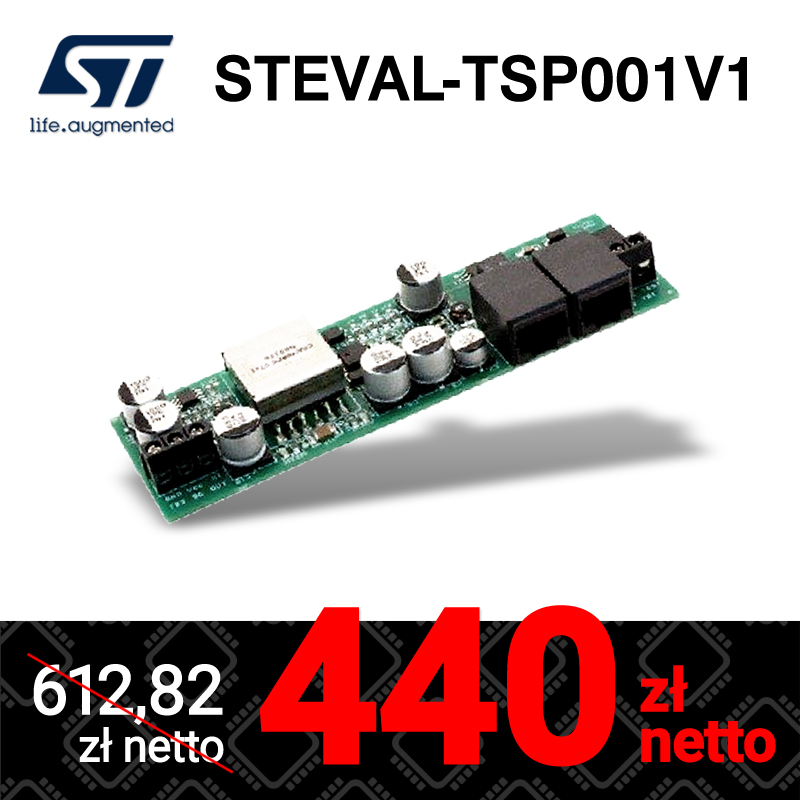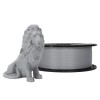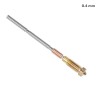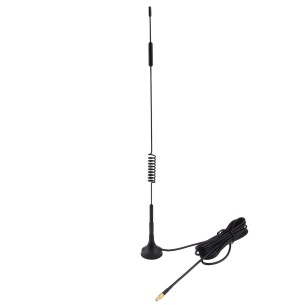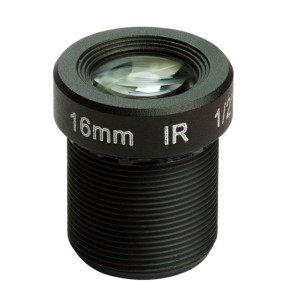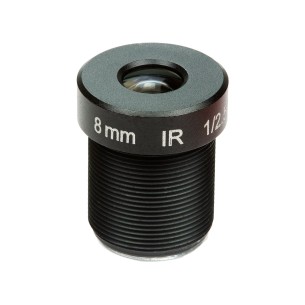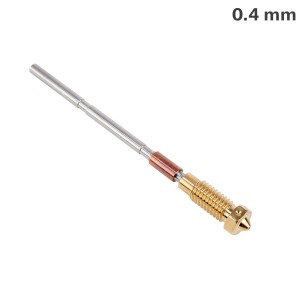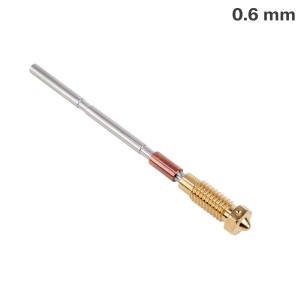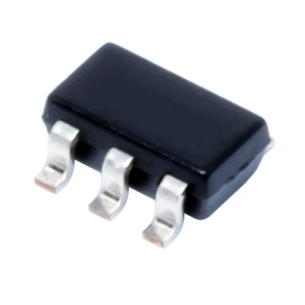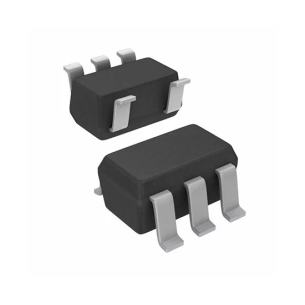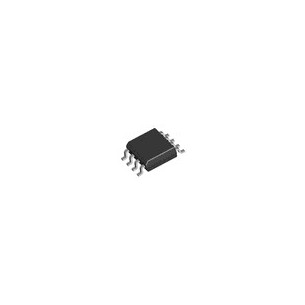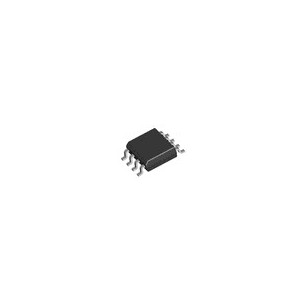Products
Categories
- Main categories
-
- 3D PRINTING
- ARDUINO
- AUTOMATION
- BOOKS
- CYBERSECURITY
- EDUCATION
- ELECTRONICS
- Cables
- Cameras and accessories
- Communication
- Conductive materials
- Connectors
- ARK connectors (Terminal Block)
- Banana connectors
- Coaxial connectors (RF)
- Connectors
- Crocodile clip
- D-Sub drawer connectors
- DC power connectors
- FFC/FPC ZIF connectors
- Goldpin connectors
- IDC connectors
- JACK connectors
- JST connectors
- Jumpers
- Memory cards slots
- Other connectors
- Pogo pin
- Quick couplers
- RJ45 connectors
- Slip ring connector
- Supports
- USB connectors
- USB PD Adapters for Laptops
- WF connectors
- Cooling
- Displays
- Electronic modules
- A/D and D/A converters
- Audio
- Barcode readers
- CAN converters
- Converters USB - UART / RS232
- Cryptographic module
- Data logger
- DDS/PLL generators
- Digital potentiometers
- Encoders
- Expanders of the I/O
- Fingerprint readers
- Galvanic isolation modules
- HMI modules
- Image and video
- JTAG accessories
- Keyboards, buttons
- LED drivers
- Memory card readers
- Memory modules
- Modules with power outputs
- Motor controllers
- Power modules
- RS485 converters
- RTC modules
- Servo Controllers
- TSOP infrared receivers
- USB Converters - I2C / 1-Wire / SPI
- Voltage converters
- Gadgets
- GPS
- Intelligent clothes
- LED - diodes, displays, stripes
- Luminous wires and accessories
- Machine vission (MV)
- Memory cards and other data storages
- Passive elements
- PC accessories
- Printers
- Programatory czasowe
- Prototype boards
- Relays
- Semiconductors
- A/C converters (ADC)
- Analog systems
- Audio systems
- Bridge rectifiers
- Button
- D/A Converters (DAC)
- DDS synthesizers
- Digital circuits
- Diodes
- Drivers of motors
- DSP microprocessors
- Energy counters
- Energy harvesting
- ESD security
- IGBT drivers and bridges
- Interface systems
- LED drivers
- Logic converters
- Memory
- Microcontrollers
- Optotriacs and optocouplers
- Other
- PLL generators
- Power systems
- Programmable systems
- Resetting systems
- RF systems
- RTC systems
- Sensors
- SoC systems
- Timery
- Touch sensors
- Transistors
- Sensors
- Accelerometers
- Air humidity sensors
- Air quality sensors
- Current sensors
- Distance sensors
- Flow sensors
- Gas sensors
- Gyroscopes
- Hall sensors
- Humidity sensors
- Infrared sensors
- Laser scanner
- Light and color sensors
- Liquid level sensors
- Magnetic sensors (compasses)
- Medical sensors
- Motion sensors
- PH sensors
- Position sensors
- Pressure sensors
- Pressure sensors
- Reflection sensors
- Sensors 6DOF/9DOF/10DOF
- Sensors of liquid quality
- Temperature sensors
- Vibration sensors
- Sound transducers
- Switches and buttons
- Cables
- FPGA DEVELOPMENT KITS
- MEASURING DEVICES
- Anemometers
- Cable testers
- Distance measurement
- Electronic loads
- Generators
- Insulation resistance meters
- LCR meters
- Logic analyzers
- Measures and calipers
- Multimeters
- Network analyzers
- Oscilloscopes
- Other meters
- Panel meters
- Radiation detectors
- Sound meters
- Temperature measurement
- Testery USB
- Voltage indicator
- Wattmeters
- Weights
- MECHANICS
- MINICOMPUTERS (SBC)
- POWER
- RASPBERRY PI
- Accessories for Raspberry Pi
- Audio video cables for Raspberry Pi
- Case Raspberry Pi
- Cooling for Raspberry Pi
- Displays for Raspberry Pi
- Extension modules for Raspberry Pi
- Memory cards for Raspberry Pi
- Power for Raspberry Pi
- Raspberry Pi 3 model A+
- Raspberry Pi 3 model B
- Raspberry Pi 3 model B+
- Raspberry Pi 4 model B
- Raspberry Pi 400
- Raspberry Pi 5
- Raspberry Pi 500
- Raspberry Pi cameras
- Raspberry Pi Compute Module
- Raspberry Pi model A/ B+/2
- Raspberry Pi Pico
- Raspberry Pi prototyping
- Raspberry Pi Zero
- Raspberry Pi Zero 2 W
- RETIRED PRODUCTS
- SALE
- STARTER KITS, PROGRAMMERS, MODULES
- Atmel SAM
- Atmel Xplain
- AVR
- Coral
- DFRobot FireBeetle
- ESP32
- ESP8266
- Feather / Thing Plus
- Freedom (Kinetis)
- M5Stack
- Micro:bit
- Nordic nRF
- Other development kits
- Particle Photon
- Peripheral modules
- PIC
- Raspberry Pi RP2040
- RFID
- RISC-V
- Seeed Studio LinkIt
- Segger programmers
- SOFTWARE
- Sparkfun MicroMod
- STM32
- STM32 Discovery
- STM32 MP1
- STM32 Nucleo boards
- STM8
- Teensy
- Universal programmers
- WRTNode
- XIAO/Qt PY
- Atmel SAM
- WORKSHOP
- Adhesives for hot glue guns
- Chemistry
- Agents for securing electronics
- Cleaning and preserving agents
- Compressed air
- Conductive paints and varnishes
- Distilled water
- Etcher
- Freezing
- Gas for lighters and burners
- Isopropyl alcohol (IPA)
- Label removers
- Lubricants, oils
- Pastes and adhesives thermally conductive
- PCB cleaning products
- Thermopads - thermally conductive tapes
- CNC milling machines
- Crimping tools
- Dispensing needles
- Gluers
- Glues
- Heat-shrink tubing
- Insulation strippers
- Knives
- Laboratory power supplies
- Microscopes
- Mini drills and grindrers
- Organizers
- Personal protection (OHS)
- Power tools
- Sandpapers
- Scissors
- Soldering
- Antistatic mats and accessories (ESD)
- BGA balls
- BGA rework stations
- Brushes and ESD brushes
- Desoldering Wick
- Handles, magnifiers
- Heat guns
- Heaters and soldering irons
- Laminates
- Portable soldering irons
- Silicone Soldering Mats
- SMD Accessories
- Soldering accessories
- Soldering chemistry
- Soldering irons
- Soldering pastes
- Soldering pots
- Soldering stations
- Soldering tips
- Sponges and cleaners
- Stand for soldering irons
- Tin
- Tin extractors
- Ultrasonic cleaners
- Tapes (aluminum, kapton, copper, insulating)
- Tools
- Tweezers
- Vices
- Workshop lighting
- 3D PRINTING
New products
New products New products
Category: DataFlash memory
DataFlash Memory: Modern Solutions in Electronics
DataFlash memory modules are innovative semiconductor solutions gaining increasing recognition in the electronics world for their exceptional properties. They feature fast data access, large capacity, and long lifespan. The use of advanced technologies allows for efficient data storage and processing, making these memories indispensable in demanding applications. DataFlash modules are also highly resistant to shocks and vibrations, making them ideal for use in harsh environmental conditions. With advanced memory management algorithms, these modules ensure high data integrity, which is crucial in applications where every bit of data is significant.
There are 5 products.
The SN74AHCT1G126DBVR is a single-input, three-state digital buffer ideal for bus and control applications. Compatible with TTL logic, it operates over a voltage range of 4.5V to 5.5V, making it suitable for systems with a variety of logic levels
74V1G125 is a single-channel bus buffer with ~OE input and three-state output, operating in the voltage range of 2–5.5 V. Thanks to its compact SOT23-5 package, it is suitable for embedded systems and applications requiring isolation and control of digital lines.
1M bit, 2.7-Volt Only Serial-Interface Flash with One 264-Byte SRAM Buffer, ATM, SOIC8, RoHS
No product available!
No product available!
Advanced Technologies in DataFlash Memory
DataFlash memory utilizes advanced manufacturing technologies that enable component miniaturization while increasing their capacity and performance. Thanks to NAND Flash technology, DataFlash offers higher storage density, which translates to more data stored in compact sizes. Additionally, the use of SPI (Serial Peripheral Interface) allows for fast data transfer, which is critical in applications requiring high bandwidth. Technologies such as wear leveling, bad block management, and ECC (Error Correction Code) ensure memory longevity and reliability, which is particularly important in industrial and automotive applications. Wear leveling evenly distributes write operations across the entire memory, preventing premature wear of specific memory areas, while bad block management handles damaged memory blocks, minimizing their impact on performance and data integrity.
Versatile Applications in Various Fields of Electronics
DataFlash memory finds wide application in various electronic devices. In embedded systems, they are used as a reliable source of memory for storing program code and operational data. In IoT devices, due to their low power consumption, DataFlash enables long-lasting operation of battery-powered devices. In smartphones and tablets, they provide fast data access, improving device performance. In industrial systems, DataFlash is used in data loggers, PLC controllers, and monitoring systems, where memory reliability and longevity are crucial. In automotive applications, such as navigation systems, infotainment, and ADAS (Advanced Driver Assistance Systems), DataFlash ensures quick access to large amounts of data, necessary for the proper functioning of these systems. DataFlash is used in diagnostic devices, monitoring equipment, and patient data storage systems, where data integrity and availability are critical. Their use in these fields confirms the versatility and reliability of these memories.
Innovations and Future Prospects of DataFlash
The future of DataFlash memory looks extremely promising. Research and development efforts focus on further miniaturization, increased capacity, and operation speed. It is expected that future generations of these memories will be even more efficient and durable, opening up new possibilities for their application. Innovations in materials and manufacturing technologies will further develop these modules, making them even more reliable and efficient. In the future, new communication interfaces are expected to be introduced, increasing bandwidth and reducing latency, which will be crucial in applications requiring fast processing of large amounts of data, such as artificial intelligence and big data. Additionally, the development of 3D NAND memory technology will allow for further capacity increases without increasing module sizes. DataFlash memory will also become increasingly integrated with energy management systems, allowing for even more efficient use of energy in battery-powered devices. With these innovations, DataFlash will remain a key element of modern electronic systems, providing reliable and efficient data storage.

